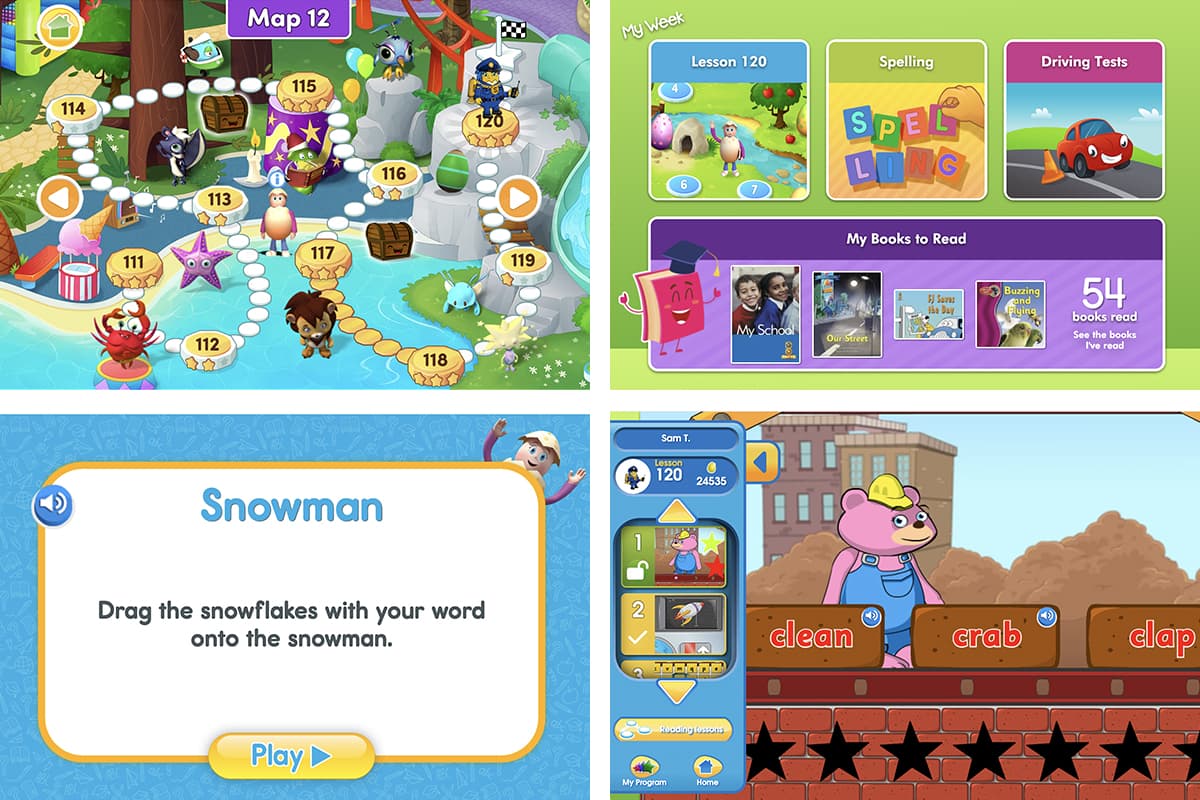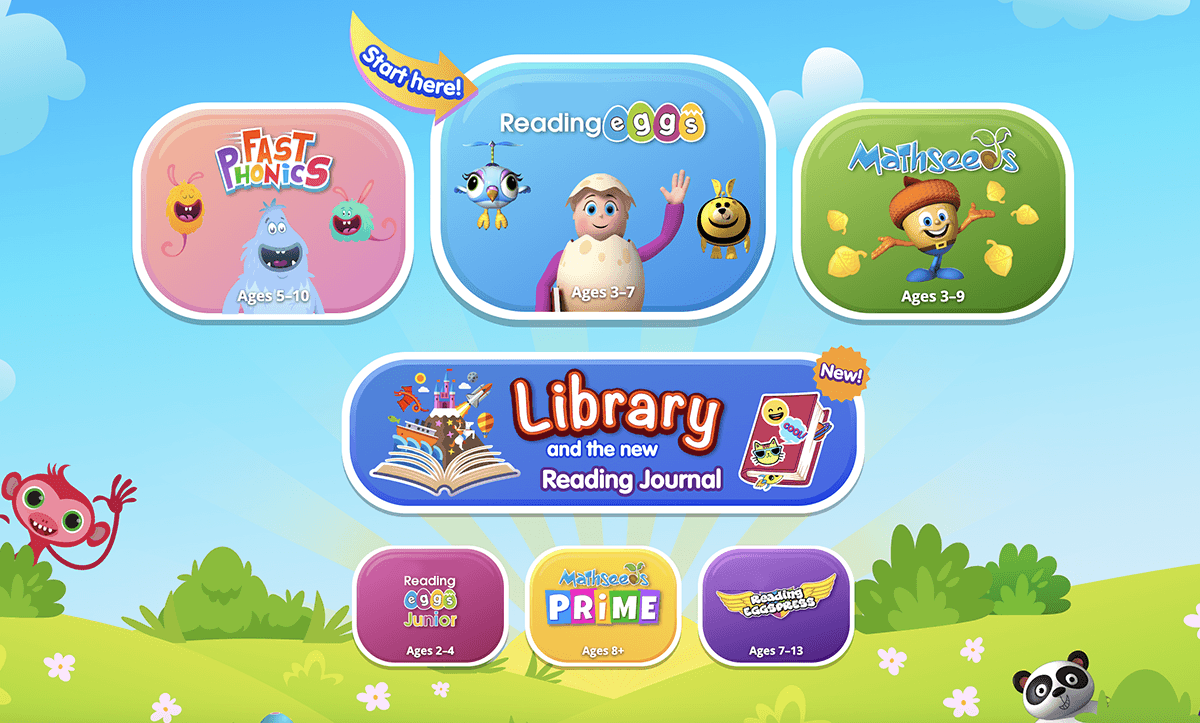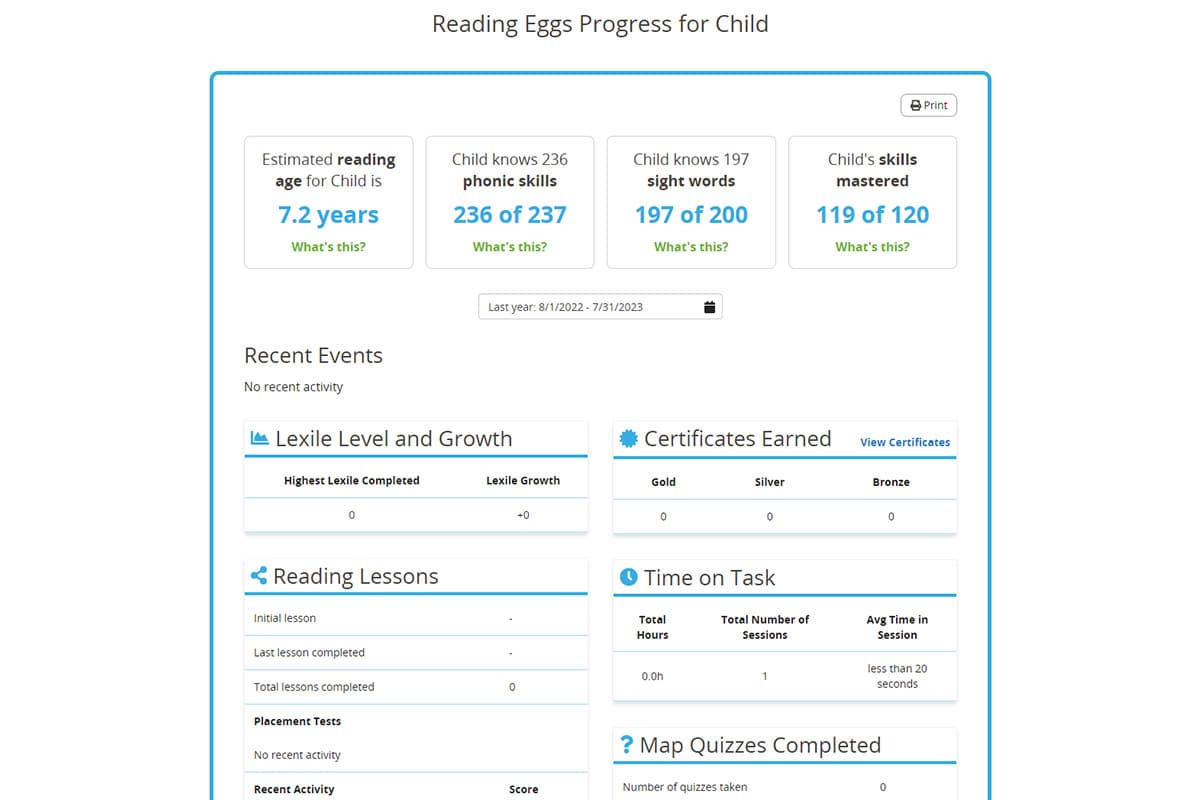


How to Maximise Your ESA Funds – Top Tips for Parents (US)

ESA funds enable parents to customise their children’s learning journey
Are you a parent in the United States looking to make the most of your Education Savings Account (ESA) funds? These state funding programs can be a game-changer for your family’s education, enabling you to customise your children's learning journey. But knowing how to use ESA funds wisely – and make every dollar count – takes some planning.
In this article, we’ll guide you through the ESA programs available in each state, what the funds can be used for and important things to consider before making any purchases.
Whether you’re homeschooling or considering supplemental educational programs, you’ll discover practical tips to maximise your ESA funds and create an exceptional learning experience for your kids.
Contents
esa-fund-state-programs-jump-link
1. Understand your state's ESA program
Currently, 18 states offer ESA programs and each state runs its program differently, with unique rules and opportunities. Before spending any money, take time to learn exactly how your state's program works.
Key things to understand:
Eligibility requirements: Who qualifies for ESA funds in your state?
Funding amounts: How much money will you receive and when?
Deadlines: When do you need to apply and when do the funds need to be used?
Approved expenses: What can you legally use the money for?
Reporting requirements: What documentation do you need to provide?
Check your state education department's ESA website for specific details:
State | ESA program |
|---|---|
Alabama | |
Arizona | |
Arkansas | |
Florida | |
Georgia | |
Indiana | |
Iowa | |
Louisiana | |
Mississippi | |
Montana | Special Needs Equal Opportunity Education Savings Account Program |
New Hampshire | |
New York | |
North Carolina | |
South Carolina | |
Tennessee | |
Texas | |
Utah | |
West Virginia | |
Wyoming |
Pro tip: Join online ESA parent groups for your state. These can be a great source for practical advice and to learn from the experiences of other parents.
Online learning programs for reading and maths
Looking to use your ESA funds for online learning programs? Try the multi-award winning Reading Eggs and Mathseeds programs for your homeschooling curriculum or as a supplement to traditional tuition for up to four children.
Reading Eggs (for ages 2–13)
A comprehensive program that teaches the five key components of learning to read: phonemic awareness, phonics, vocabulary, fluency and comprehension.
Mathseeds (for ages 3–9)
Teaches foundational maths and problem‑solving skills while nurturing an early love of maths.
Home learning made easy and fun!
Your children will love the hundreds of interactive online lessons, fun learning games and over 4,000 e-books. You’ll love the free printable resources, lesson planning tools and regular progress reports that let you track your children’s progress. Start your 30-day free trial today!
esa-fund-qualified-expense-jump-link
2. Know what counts as a Qualified Expense
ESA funds can typically be used for a range of educational expenses, but the specifics vary by state.
Generally approved expenses include:
Curriculum materials
Online learning programs
Private school tuition
Tutoring services
Educational therapy
Standardised testing fees
College entrance exam fees.
Technology and electronics
Many state ESAs will cover technology purchases, provided they're needed for educational purposes.
There could also be limits on how much you can spend on these items. Some states limit technology spending to a percentage of your total ESA funds (often around 10-15%).
Make sure to check your state program’s guidelines to confirm before making any purchases.
If you’re planning to homeschool for the first time, you might need to invest in technology to set up your home learning space. For example, equipment such as laptops, tablets, educational software and assistive technology.
Be sure to factor in these purchases when planning your budget.
Pro tip: Keep a copy of your state's approved expense list handy when planning purchases. When in doubt, ask your ESA program administrator before spending!
esa-funds-educational-needs-jump-link
3. Prioritise your family's educational needs
Every family has different educational priorities. Before spending any ESA funds, assess what your children need most.
Consider these factors:
Number of children: How many children are you looking to use ESA funds for?
Special learning needs: Do any of your children need specialised services or resources?
Learning style: Do your children have learning preferences or learn better with certain types of materials?
Academic strengths and weaknesses: Which subjects need the most attention?
ESA funds are generally allocated on a per-child basis. However, you might be able to use your allocation more effectively by considering if any resources you plan to purchase can be shared among your children.
Building a tailored homeschool curriculum that meets your child’s unique needs is one of the many advantages of home education. In states where ESA funds can be used for homeschooling, this is now an affordable option for more parents.
If you’re new to homeschooling and looking for guidance, check out our article on how to choose the best homeschool curriculum.
For children with special needs, look for programs specifically designed to support various learning differences.
For example, children with dyslexia or autism often benefit from structured, multi-sensory learning programs that provide consistent practice and immediate feedback.
Online reading programs like Reading Eggs can be beneficial for children with learning differences.
The Reading Eggs learning environment is structured, predictable and highly-visual, meeting the needs of children with autism.

Specialised learning materials with dyslexia-friendly fonts, off-white backgrounds and simplified layouts help children with dyslexia overcome reading challenges.
Pro tip: Start by addressing your child's biggest academic challenges first, then allocate remaining funds to other educational areas.
esa-funds-approved-vendors-jump-link
4. Choose approved vendors to simplify the process
Using ESA-approved Education Service Providers (ESPs) makes the payment process much easier.
These ESPs have already been vetted by your state's program and typically have streamlined payment systems in place.
In many cases, you can avoid the reimbursement process altogether and pay directly through platforms like ClassWallet, which connect to your ESA funds.
Reading Eggs (Blake eLearning) is an ESA-approved vendor in multiple states, including:
Alabama (The CHOOSE Act)
Arizona (Empowerment Scholarship Account)
Arkansas (Children's Educational Freedom Account)
Florida (Step Up For Students)
Georgia (Georgia Promise Scholarship)
Indiana (Education Scholarship Account Program)
Montana (Special Needs Equal Opportunity Education Savings Account Program)
New Hampshire (Education Freedom Accounts)
New York (Children's Scholarship Fund NYC)
Tennessee (Education Freedom Scholarship Program)
Utah (Fits All Scholarship Program)
Wyoming (Steamboat Legacy Scholarship Act).
Pro tip: Create a list of approved vendors that match your educational needs and budget. This will save you time when planning purchases throughout the school year.
Looking for an ESA-approved learning program that delivers real results?
Blake eLearning, the publisher of Reading Eggs and Mathseeds, is an approved vendor in multiple state ESA programs. You can try Reading Eggs and Mathseeds free for 30 days without needing to make a purchase. A free trial will give you access to multiple programs for up to four children: Reading Eggs Junior (ages 2-4), Reading Eggs (ages 3-7), Fast Phonics (ages 5-10), Reading Eggspress (ages 7-13) and Mathseeds (ages 3-9). Start your free trial today!
esa-funds-request-vendors-jump-link
5. Request new vendors if yours isn't listed
Don't see your preferred educational provider on the approved vendor list? You can often request to add them!
Here's how to request a new vendor:
Contact your state's ESA program administrator
Ask about the process for adding new vendors
Get the necessary forms for vendor applications
Reach out to the company and ask if they're willing to become an approved vendor
Follow up regularly on the application status.
Many educational companies are eager to work with ESA families but may not know about the opportunity. By initiating the process, you help both the vendor and other ESA families.
Pro tip: Team up with other ESA families who want to use the same vendor. A group request often carries more weight than an individual one.
esa-funds-online-learning-jump-link
6. Embrace online learning opportunities
Online learning programs offer exceptional value for ESA funds. They're generally more affordable than in-person options and provide flexibility for your family.
Benefits of online learning with ESA funds:
Cost-effective: Many online programs cost less than traditional classes
Flexibility: Your child can learn anytime, anywhere, at their own pace
Multiple children: Many programs allow access for multiple children under one subscription
Automated teaching: Reduces parent workload with guided lessons
Progress tracking: See exactly what your child has learned and where they need help.
Pro tip: Look for online programs that offer annual subscriptions rather than monthly ones – they typically provide better value and can be fully covered by ESA funds at once.

Online learning programs like Reading Eggs offer exceptional value for money and can help you stretch your ESA funds. Both monthly and annual subscription options are available.
7. Plan ahead and set a budget for each subject
Careful budgeting helps your ESA funds last throughout the school year. Create a plan that covers all necessary subjects while prioritising your children's specific needs.
Sample budget breakdown:
Core curriculum: 40-50% (reading, maths, science, social studies)
Supplemental materials: 20-25% (workbooks, manipulatives, educational games)
Technology: 10-15% (educational software, necessary devices)
Specialised services: 10-20% (tutoring, therapy, enrichment)
Testing and assessment: 5-10% (standardised tests, evaluations).
When looking for curriculum materials, consider programs that can be used by multiple children in your family.
Pro tip: Create a spreadsheet to track planned expenses against actual spending throughout the year. This helps you adjust your budget as needed and plan for the following year.
esa-funds-enrichment-activities-jump-link
8. Don't forget electives and enrichment activities
While core academic subjects are important, don't overlook the value of electives and enrichment activities. These can help develop well-rounded students and spark lifelong passions.
Popular enrichment options covered by many ESA programs:
Music lessons
Art classes
Physical education and sports
Foreign language instruction
Coding and technology classes
Field trips to museums and historical sites.
Check your state's guidelines, as some have specific rules about enrichment activities. Many states require that these activities have clear educational goals and outcomes.
Pro tip: Look for enrichment programs that include materials in their fees rather than requiring additional purchases. This stretches your ESA funds further.

esa-funds-testing-evaluations-jump-link
9. Budget for testing and academic evaluations
Many ESA programs require regular academic assessments. Even if not required, testing can help you track progress and identify areas needing attention.
Common testing options:
Standardised achievement tests
Portfolio assessments
Third-party evaluations
Online assessment tools.
If formal assessments are required in your state, be sure to include these costs in your annual ESA budget. Consider the types of tests required and whether there will be other incidental costs incurred.
Pro tip: Schedule assessments at strategic times – early in the year to establish baselines and identify needs, mid-year to check progress and end-of-year to document growth.
esa-funds-learning-materials-jump-link
10. Buy books and learning materials strategically
Books and learning materials can quickly consume your ESA budget if not purchased thoughtfully.
Consider these strategies:
Buy used when possible: Many curriculum materials retain their value
Choose non-consumable resources: Materials that can be reused by multiple children
Look for bundled resources: Sets that cover multiple grade levels or subjects
Consider digital alternatives: E-books and online libraries
Invest in quality reference materials: Resources your family will use for years.
Digital resources like the Reading Eggs online library can save you significant money. With over 4,000 e-books (both fiction and nonfiction), you'll potentially need to purchase fewer physical reference books and reading materials.
The digital library is included with Reading Eggs subscriptions and can be accessed by all children on your account.

Many ESA programs also allow for teacher and parent resources, such as curriculum guides and teaching materials. Check if these supporting resources are approved expenses in your state.
Pro tip: Create a multi-year plan for major purchases. Some items (like microscopes or comprehensive curriculum sets) are expensive but can be used for several years, making them worthwhile investments.
esa-funds-reimbursement-process-jump-link
11. Familiarise yourself with the reimbursement process
Each state handles ESA payments differently. Some use direct payment systems, while others require you to pay first and request reimbursement.
Common payment methods:
Debit cards: Pre-loaded cards specifically for ESA purchases
Direct vendor payments: The ESA program pays approved vendors directly
Reimbursement: You pay upfront and submit receipts for repayment
Third-party platforms: Systems like ClassWallet that manage transactions.
If your state uses a reimbursement model, understand exactly what documentation is required.
Typically, you'll need:
Original receipts
Proof of payment
Description of educational purpose
Completed reimbursement forms.
Pro tip: Create a simple filing system for all ESA-related paperwork. A dedicated folder or digital storage space makes it easy to find documentation when needed.
esa-funds-record-keeping-jump-link
12. Keep robust records
Good record-keeping is essential for ESA compliance and can save hours of stress at reporting time.
Track these important details:
Expenses: Keep all receipts and payment confirmations
Educational activities: Log what your child is learning
Progress: Document academic growth and milestones
Hours spent: Some states require tracking educational hours
Communication: Save emails with ESA administrators.
Pro tip: Set a weekly time to update your records rather than trying to reconstruct everything at reporting deadlines. Even 15 minutes each week saves hours of work later.
These reports can serve as valuable documentation for your ESA requirements while helping you understand your child's strengths and weaknesses.

The built-in progress reports in Reading Eggs can help automate your ESA compliance and reporting.
esa-funds-classwallet-jump-link
13. Use ClassWallet (or alternatives) to stay organised
Some states now use ClassWallet to manage ESA funds. This platform simplifies the process of paying for approved educational expenses.
ClassWallet benefits:
Direct payment to approved vendors
Digital receipt storage
Spending categorisation
Easy reporting for ESA requirements
Reduced paperwork burden.
If your state offers ClassWallet, take advantage of the training resources to understand how to use it effectively. Reading Eggs accepts ClassWallet payments in states like Arizona and Texas, making the purchase process seamless.
Not all states use ClassWallet, so check what system your state employs. Alternative platforms include MyScholarShop (Florida) and Odyssey (Wyoming).
Pro tip: Schedule a phone call with your ESA program's support team to walk through the payment platform together. This can help clarify any confusion about the process.
esa-funds-family-best-interests-jump-link
14. Consider your family's best interests
While ESA programs provide wonderful opportunities, they also come with rules and requirements. Always prioritise what works best for your family's educational goals.
Some homeschoolers worry that accepting ESA funds might limit their freedom or lead to unwanted oversight. Consider these factors carefully when deciding whether to participate.
Remember that ESA funds can do more than just cover books and tuition – they can empower you to build a well-rounded, personalised curriculum tailored to your children's specific needs. The key is finding the right balance between program requirements and educational freedom.
Pro tip: Connect with other ESA families to share experiences and strategies. Their insights can help you navigate potential challenges while making the most of available opportunities.
Conclusion
Maximising your ESA funds requires planning, organisation and creativity, but the educational possibilities are worth the effort! By understanding your state's program, choosing resources wisely and keeping good records, you can create an exceptional learning experience for your children.
Key takeaways:
Know the rules: Understand your state's specific ESA guidelines
Plan strategically: Budget for all subjects and educational needs
Choose wisely: Select resources that provide maximum value
Stay organised: Keep detailed records of spending and academic progress
Think long-term: Invest in quality resources that will benefit your family for years.
With careful management, your ESA funds can transform your children's education by providing exactly the resources they need to thrive!
Online learning programs for reading and maths
Looking to use your ESA funds for online learning programs? Try the multi-award winning Reading Eggs and Mathseeds programs for your homeschooling curriculum or as a supplement to traditional tuition for up to four children.
Reading Eggs (for ages 2–13)
A comprehensive program that teaches the five key components of learning to read: phonemic awareness, phonics, vocabulary, fluency and comprehension.
Mathseeds (for ages 3–9)
Teaches foundational maths and problem‑solving skills while nurturing an early love of maths.
Home learning made easy and fun!
Your children will love the hundreds of interactive online lessons, fun learning games and over 4,000 e-books. You’ll love the free printable resources, lesson planning tools and regular progress reports that let you track your children’s progress. Start your 30-day free trial today!






